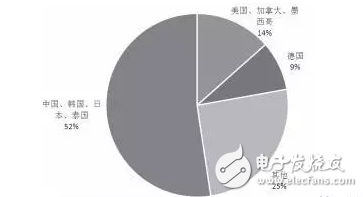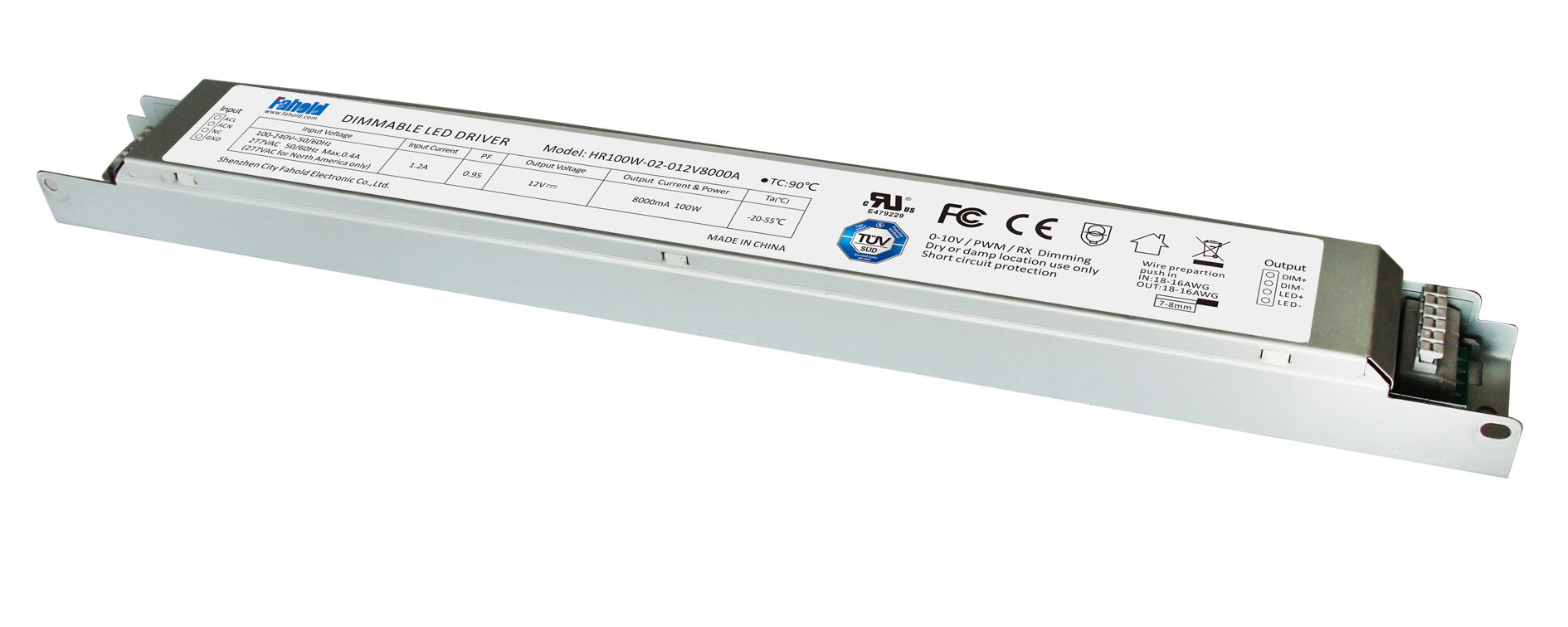First, the development status of the robot industry
The robot is an automatic equipment integrating mechanical, electronic, control, sensing, artificial intelligence and other multi-disciplinary advanced technologies. Since the birth of the robot industry in 1956, after nearly 60 years of development, robots have been widely used in high-tech industries such as equipment manufacturing, new materials, biomedicine, and smart new energy. The integration of robotics and artificial intelligence technology, advanced manufacturing technology and mobile Internet technology has promoted the transformation of human society's lifestyle.
(1) Global robot market demand continues to grow
The market size of industrial robots and service robots continues to expand. According to IFR statistics, the global sales of industrial robots exceeded 240,000 units for the first time in 2015, of which sales in Asia accounted for about 2/3 of global sales, with sales of 144,000 units; in Europe, 50,000 units, of which sales in Eastern Europe reached 29%. % is one of the fastest growing regions in the world; sales in North America reached 34,000 units, an increase of 11% from 2014. Total sales in China, Korea, Japan, the US and Germany account for 3/4 of global sales. China, the United States, South Korea, Japan, Germany, Israel and other countries are areas where industrial robot technology, standards and market development are active in recent years. From 1998 to 2014, the global sales of industrial robots showed a steady growth; especially in 2005-2014, the sales of industrial robots increased rapidly, and the annual growth rate of new industrial robots was about 14%. In 2014, the sales volume of global dedicated service robots was 24,000 units, an increase of 11.5% compared with 2013. The global sales of personal/home service robots was about 4.7 million units, an increase of 28% compared with 2013.
Chart 2014 Global Industrial Robot Market Distribution

Source: International Robotics Federation (IFR)
(2) Asia Pacific becomes the most important market
Asia is currently the world's largest industrial robots, accounting for 50% of robots worldwide, followed by the Americas (including North America, South America) and Europe. In 2012-2015, Asian robot sales grew at an average annual rate of 15%, much higher than the growth rate of 6% in the Americas and Africa. In 2015, more than 140,000 industrial robots were sold in the Asia Pacific region. In 2014, the installed capacity of industrial robots in China, Japan, South Korea and Thailand accounted for 75% of the total in the Asian region, ranking first, second, fourth and eighth respectively in the world. The market size of industrial robots in four countries accounted for 52.4% of global industrial robot sales.
(3) High concentration of industrial robots
The main producing and selling countries of industrial robots are concentrated in Japan, South Korea and Germany, and the number of robots and annual new additions in the three countries ranks among the top in the world.
The density and possession of robots in Japan, Korea and Germany are among the world's leading. According to IFR statistics, in Japan, there were 323 industrial robots per 10,000 workers in Japan, 437 in South Korea and 282 in Germany. In 2013, Japan’s robots were 304,000, South Korea was 156,000, and Germany was 168,000. .
In 2014, the robot market in Japan, South Korea and Germany accounted for 30.9% of the global total, with a market size of 29,000 units, 21,000 units and 20,000 units respectively. Affected by the transformation and upgrading of global manufacturing industry, the market share of industrial robots in the three countries accounted for 30.9% of the global market in 2014, down 6.6% year-on-year. The Japanese robot market is mature, and its manufacturers are highly competitive internationally. The brands such as FANUC, Nazhibi and Kawasaki continue to lead in the field of microelectronics and power electronics. South Korea's high-end technologies such as semiconductors, sensors, and automated production have laid the foundation for the rapid development of robots. German industrial robots are at the leading level in the fields of human-computer interaction, machine vision and machine interconnection. The domestic KUKA company is one of the world's four major manufacturers of industrial robots, with an annual output of more than 18,000 units.
(4) The service robot market is in its infancy
Service robots mainly include professional service robots and personal/home service robots. The marketization of global service robots is still in its infancy, driven by rigid demand such as labor shortage and aging population, with the impact of per capita disposable income improvement and rapid iteration of advanced technologies such as Internet of Things, big data, computers, and human-computer interaction. The service robot industry has huge room for development. In 2012-2017, the service robot market will grow at a compound annual growth rate of 17.4%, and the market size is expected to reach US$46.18 billion in 2017.
Chart 2005-2014 Japanese industrial robot domestic sales and export structure changes

Source: Research Institute Think Tank
The global service robot market is still in its infancy. First, the peripheral technology of the service robot could not be solved. Service robot technology is a multi-disciplinary cross-integration technology involving mechanical design, automatic control, bionics, kinematics and other fields. In the context of diversity, randomness and complexity, its task complexity and real-time for environment perception. Sexual requirements are higher. Second, the overall level of service robots with high unit value is low and the development speed is slow. For example, medical robots have high requirements for control motion, fine tissue operation, and three-dimensional high-definition visual capabilities, and only a small number of developed countries have the ability to adopt such technologies.
At present, only some defense robots, household cleaning robots, and agricultural robots have been industrialized in the global service robot market, and medical robots and rehabilitation robots with higher technical content are still in the research and development stage. Global personal and home service robot products include home work robots, entertainment and leisure robots, handicapped assisted robots, and surveillance robots. Among them, weed robots in home work robots are highly marketable and diversified. For example, Da Vinci exterior robots, milking robots and military drones have formed a mature industrial chain.
Industrial Strip Lights Led Driver
Industrial Strip Lights Led Driver
12V led driver , 24v led driver, led power driver, Specifically for Industrial strip light, Isolated driver, easy to install, high security, constant Voltage power based. Are generally aluminum materials, long type driver.We have skilled engineers to answer all your questions and enquiries and provide all-round solutions basis on your project(s) and provide technical supporting.
- Standard Linear Lighting, strips lighting
- Cost-effective light-line solution for industry,commercial and other applications
- Good quality of light with high lumen output to meet different requirements
- Easy to order and install,requiring less time,reducing packaging waste and complexity
- Flexible solution
Parameter:
Input voltage: 100-277vac / 100-347V
output voltage: 25-40vdc / 12Vdc / 24vdc
current: 100mA-8000mA.
Power factor: >0.9
Dimming:0-10V / PWM / RX / DALI.
>=50000hours, 5 years warranty.
certificate: UL CE FCC TUV SAA ect.


FAQ:
Question 1:Are you a factory or a trading company?
Answer: We are a factory.
Question 2: Payment term?
Answer: 30% TT deposit + 70% TT before shipment,50% TT deposit + 50% LC balance, Flexible payment
can be negotiated.
Question 3: What's the main business of Fahold?
Answer: Fahold focused on LED controllers and dimmers from 2010. We have 28 engineers who dedicated themselves to researching and developing LED controlling and dimming system.
Question 4: What Fahold will do if we have problems after receiving your products?
Answer: Our products have been strictly inspected before shipping. Once you receive the products you are not satisfied, please feel free to contact us in time, we will do our best to solve any of your problems with our good after-sale service.
12V Led Driver,24V Led Driver,Led Power Driver
ShenZhen Fahold Electronic Limited , https://www.fahold.com
